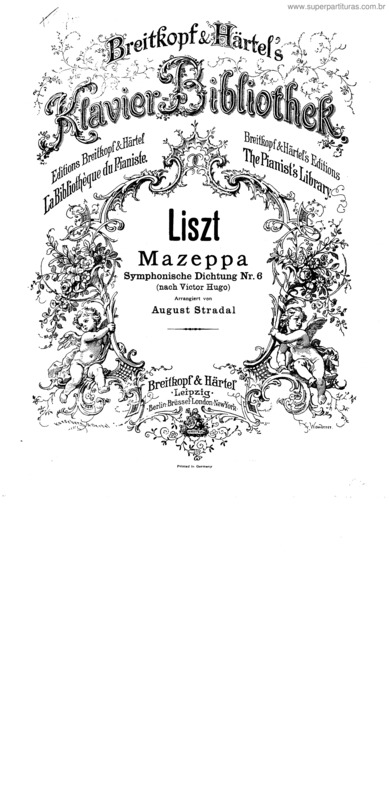

He issued them in versions for orchestra, for two pianos, and for piano duet.


Liszt did not conceive the final order of the works until all the pieces were ready for publication, but it is clear that he thought of all 12 works as a gigantic cycle.
Franz lizt tone poems die ideak series#
Liszt’s pioneering series of 12 symphonic poems came to fruition during his time as Kapellmeister at the court of the Duke of Weimar in the 1850s, although the gestation of many of the pieces begins somewhat earlier. This new album forms a significant appendix to that monument of gramophone history. In choosing our program for Canvas, Die Hunnenschlacht was an obvious choice for us as we were instantly captivated by its obscurity and its enormous scale.The pre-eminent Lisztian of our day, Leslie Howard recorded every bar of the composer’s music for solo piano during the 1990s and 2000s, including many items new to the catalogue. Compared to the edgy and aggressive theme used for the Huns, the theme of the Romans is imbued with a far greater sense of space and arrival, signaling the eventual victory of the Romans. The use of the organ is significant as it points to the universal association with faith and the uprising of Christianity against the Huns in the context of the battle, as well as informing the way the orchestral parts have been written. The organ is an incredibly important instrument within this context, ranging from contemplative and hymn like to powerful and moving. A defining feature of the Roman’s theme is closely linked to the idea of spirituality at the time, particularly Christianity, through Liszt’s use of a church organ. This is accompanied by aggressive interjections in the brass later on. The Hun’s theme is characterised by a jarring melodic and rhythmic motive, which begins in the bass line and is carried out through the orchestra. The piece is comprised of two main themes: the theme of the Huns and that of the Romans. Over his career Liszt wrote 13 tone poems using vivid imagery, lush instrumentation and ambitious harmonic progressions to bridge the gap between other areas of art and culture with music, including Die Hunnenschlacht which is one of these tone poems (no. Designed as part of a set of frescoes being commissioned for Berlin around the time it was produced, the scale of the artwork is impressive, and imparts the sheer enormity of the battle onto viewers. While there is not much historical evidence that asserts the “finer details” of the battle, it has gone down in history as a pivotal moment in the preservation of Western civilisation from the threat of the Huns. It vibrantly depicts the historical battle fought between the Huns and the Romans in 451 AD. Die Hunnenschlacht (The Battle of the Huns) is originally the work of a little known artist Wilhelm Von Kaulbach in 1850.


 0 kommentar(er)
0 kommentar(er)
